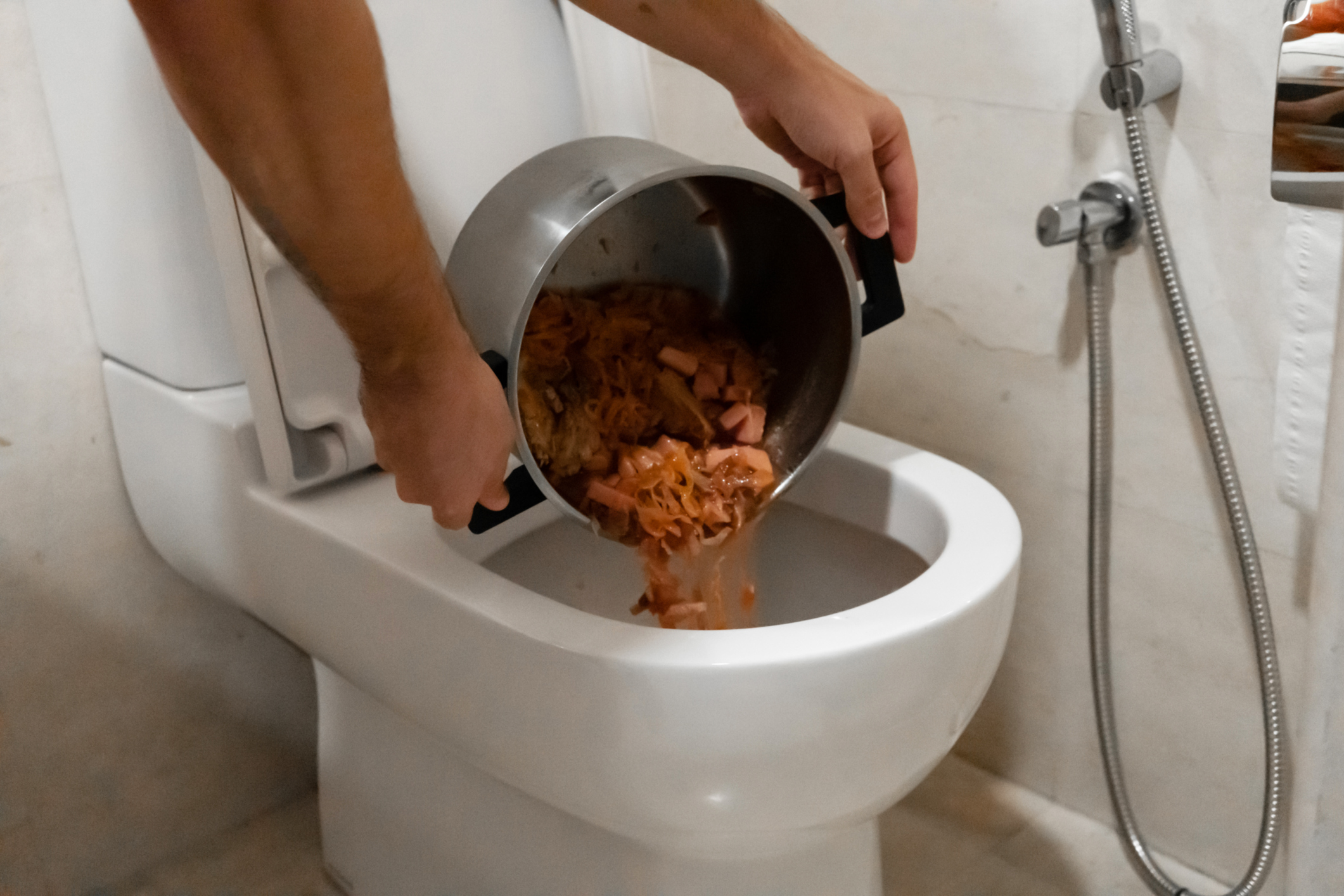Can One to Dispose of Food Waste in the Toilet?
Can One to Dispose of Food Waste in the Toilet?
Blog Article
They are making a number of good observations relating to Think Twice Before Flushing Food Down Your Toilet as a whole in the article on the next paragraphs.

Intro
Many people are often confronted with the predicament of what to do with food waste, specifically when it pertains to leftovers or scraps. One typical question that develops is whether it's alright to purge food down the toilet. In this write-up, we'll explore the reasons individuals may consider flushing food, the effects of doing so, and alternate approaches for proper disposal.
Reasons individuals might think about purging food
Absence of understanding
Some individuals may not recognize the potential harm caused by flushing food down the toilet. They might wrongly think that it's a harmless method.
Ease
Purging food down the bathroom might appear like a fast and easy remedy to taking care of unwanted scraps, especially when there's no nearby trash can readily available.
Idleness
In many cases, individuals may merely select to flush food out of large negligence, without considering the effects of their activities.
Consequences of flushing food down the commode
Ecological influence
Food waste that ends up in waterways can contribute to contamination and damage marine ecosystems. Additionally, the water made use of to flush food can strain water resources.
Plumbing issues
Purging food can cause stopped up pipelines and drains pipes, triggering expensive pipes repairs and troubles.
Kinds of food that should not be purged
Fibrous foods
Foods with coarse textures such as celery or corn husks can get entangled in pipes and trigger clogs.
Starchy foods
Starchy foods like pasta and rice can soak up water and swell, causing blockages in pipelines.
Oils and fats
Greasy foods like bacon or cooking oils need to never ever be purged down the commode as they can solidify and trigger clogs.
Appropriate disposal methods for food waste
Utilizing a waste disposal unit
For homes outfitted with garbage disposals, food scraps can be ground up and flushed through the plumbing system. Nevertheless, not all foods appropriate for disposal in this way.
Recycling
Particular food product packaging materials can be recycled, lowering waste and minimizing ecological effect.
Composting
Composting is a green way to get rid of food waste. Organic materials can be composted and utilized to improve dirt for gardening.
The importance of correct waste administration
Decreasing environmental harm
Correct waste administration techniques, such as composting and recycling, assistance reduce air pollution and maintain natural resources for future generations.
Safeguarding pipes systems
By preventing the technique of flushing food down the toilet, home owners can prevent expensive plumbing repair services and maintain the stability of their plumbing systems.
Conclusion
In conclusion, while it may be tempting to purge food down the bathroom for comfort, it's important to understand the prospective repercussions of this activity. By embracing proper waste management practices and dealing with food waste properly, people can contribute to much healthier plumbing systems and a cleaner atmosphere for all.
FLUSH FOOD DOWN THE TOILET?
FLUSHING FOOD CAN CAUSE BLOCKED DRAINS IN YOUR HOME
All of the plumbing fixtures in your home are connected to the same sewer pipe outside of your home. This outdoor sewer pipe is responsible for transporting all the wastewater from your home to the Council sewer mains. Even small pieces of food that go down the kitchen sink can cause problems for your sewer. It should therefore be obvious that flushing larger bits of food, such as meat, risks a clog in either the toilet itself or the sewer pipes. Flushing greasy food is even more problematic because oil coagulates when it cools, coating the interior lining of your pipes.
THE TOILET IS NOT A BIN
Food isn’t the only thing that people shouldn’t be flushing down the toilet. People use the toilet to dispose of all kinds of things such as tampons, makeup wipes, dental floss, kitty litter and even underwear. Water goes to great lengths to educate residents about the high costs and stress placed on wastewater treatment systems simply from people flushing the wrong stuff down the toilet. It costs taxpayers millions of dollars each year, and homeowners thousands in blocked drain repairs.
FLUSHING FOOD IS A WASTE OF WATER
Flushing food is a waste of our most precious resource - water. In June this year Level 1 water restrictions were introduced to protect water supply from drought conditions. Much of New South Wales continues to be affected by prolonged drought with recent figures revealing up to 97 per cent of the state remains in drought. Depending on whether you have a single or dual flush toilet, every single flush uses between five and 11 litres of water. In the current climate this is a huge amount of water to be wasting on flushing food that should be placed in the bin (or better yet, the compost).
https://www.jabplumbingsolutions.com.au/blog/can-you-flush-food-down-the-toilet

Do you appreciate more info about Think Twice Before Flushing Food Down Your Toilet? Leave a short review down below. We would be delighted to know your thoughts about this article. Hoping to see you back again before long. Do you know somebody else who is in the market for the niche? Take a moment to share it. I am grateful for your time. Come back soon.
Book-Now Report this page